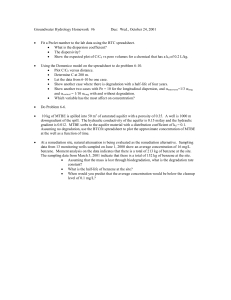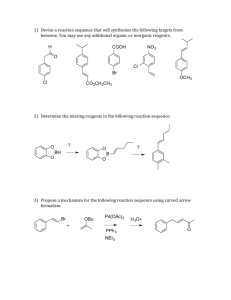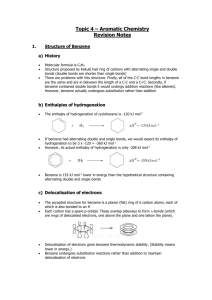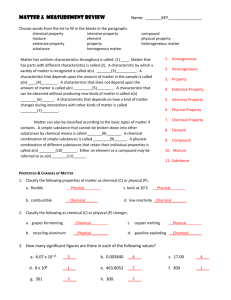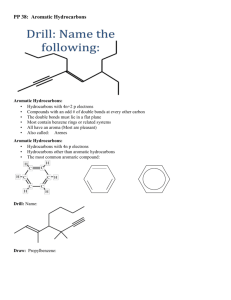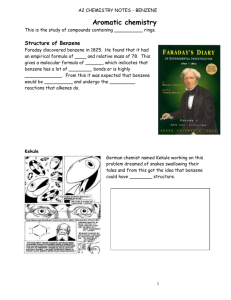The benzene problem - Glenalmond Chemistry
advertisement
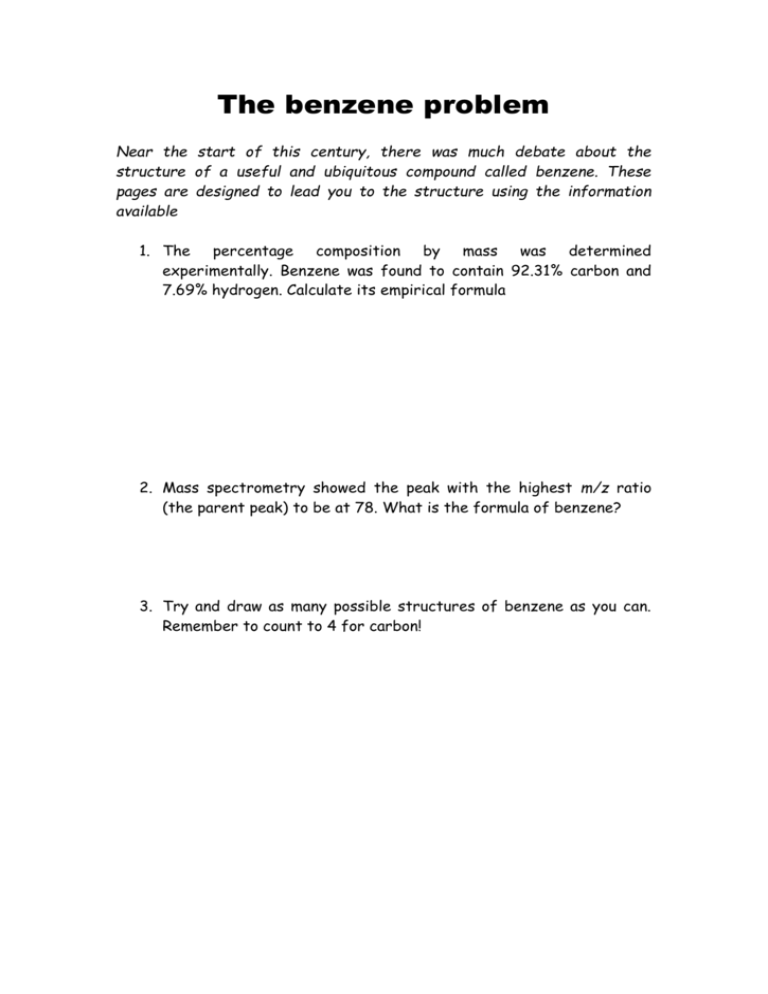
The benzene problem Near the start of this century, there was much debate about the structure of a useful and ubiquitous compound called benzene. These pages are designed to lead you to the structure using the information available 1. The percentage composition by mass was determined experimentally. Benzene was found to contain 92.31% carbon and 7.69% hydrogen. Calculate its empirical formula 2. Mass spectrometry showed the peak with the highest m/z ratio (the parent peak) to be at 78. What is the formula of benzene? 3. Try and draw as many possible structures of benzene as you can. Remember to count to 4 for carbon! 4. X-ray diffraction, where X-rays are scattered off the atoms, showing where they are in space, gave the following information about benzene a. It is a planar molecule b. It has a hexagonal shape This led a chemist called Kekulé to give it a structure with double bonds like below: 5. There was a problem with this structure, though. Complete the table below to show the formula and how many moles of Br2 each compound can react with. This is a measure of how unsaturated they are. Think about the space for benzene but don’t write anything yet Compound name Formula Hexane Moles of Br2 that can be added due to unsaturation None – it’s saturated Hexene Hexyne C6H10 Benzene If you shake benzene with bromine water, it does not decolourise – benzene does not easily undergo addition reactions. This meant that it can not have a structure like the Kekulé structure. 6. Further X-ray diffraction showed the carbon to carbon bond lengths to all be equal. This further ruled out Kekulé’s structure – it would have required two different bond lengths. The carbon to carbon bond length in benzene is 0.139nm. Use the graph below to work out the ‘bond order’ (single, double, triple etc.) in benzene. Plot the points, draw a smooth curve through them and use it to find out what order 0.139nm corresponds to Bond length (nm) Bond order 0.154 0.134 0.120 0.139 1 (ethane) 2 (ethene) 3 (ethyne ?? (benzene) Bond order in benzene _____ 7. Benzene was thus found to be a very stable, hexagonal molecule, formula C6H6. A carbon atom in it forms three single covalent bonds (two with its neighbouring carbons and one with a hydrogen) and the spare p-electron is shared in delocalised clouds above and below the ring. Draw this below showing the molecule (a) from above, (b) from the side and (c) how it is represented in Chemistry (a) (b) (c)




